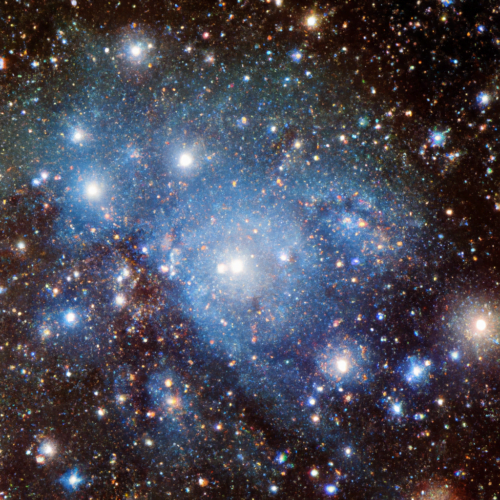Have you ever wondered if you can witness the beauty of star clusters and binary stars with just a basic telescope? Well, the answer is an emphatic yes! Even with a humble telescope, you can marvel at the mesmerizing sight of star clusters, where thousands of stars come together in a stunning celestial display. And if you’re lucky, you might even catch a glimpse of binary stars, two stars gravitationally bound and orbiting around each other. So, dust off that telescope and get ready for a captivating journey into the wonders of the night sky!
Table of Contents
What is a basic telescope?
Definition
A basic telescope is a simple and affordable optical device used to observe celestial objects such as star clusters and binary stars. It typically consists of a tube with a lens or mirror at the front, known as the objective, that gathers and focuses light. This light is then magnified and brought to the eye or a camera through another set of lenses or mirrors, known as the eyepiece. Basic telescopes are designed for beginners and amateur astronomers who want to explore the wonders of the night sky without investing in more advanced equipment.
Features
While the features can vary among different models, there are some common characteristics of basic telescopes. The most important feature is the aperture size, which determines the amount of light that can enter the telescope. The larger the aperture, the more light the telescope can gather, resulting in brighter and clearer images. Another feature is the magnification power, which is determined by the combination of the objective and eyepiece lenses. A higher magnification allows for closer and more detailed views of the objects. Basic telescopes also often include tracking mechanisms that help to keep the telescope aligned with the moving objects in the sky. Lastly, image quality is a key consideration, and basic telescopes strive to provide sharp and focused images.
Limitations
While basic telescopes are a great starting point for astronomy enthusiasts, they do have some limitations. One major limitation is their relatively small aperture size compared to more advanced telescopes. This restricts their ability to capture faint objects or details in deep space. Basic telescopes also tend to have limited magnification power, so they might not be suitable for observing very distant or small objects. Additionally, the image quality may not be as high as that of professional-grade telescopes, resulting in some distortions or imperfections. However, despite these limitations, basic telescopes still offer remarkable opportunities to explore star clusters and binary stars.
Understanding star clusters
Definition
Star clusters are groups of stars that are bound together by gravity. They can contain various numbers of stars, ranging from a few dozen to thousands or even millions. Star clusters are categorized into two main types: open clusters and globular clusters. These clusters provide scientists with valuable insights into the formation and evolution of stars, as well as the dynamics of stellar systems.
Types of star clusters
Open clusters, also known as galactic clusters, are relatively young and contain hundreds of stars. They are often found in the spiral arms of galaxies, including our Milky Way. Open clusters have a loose and irregular arrangement, with stars spread out over a larger area. Globular clusters, on the other hand, are much older and denser. They are typically spherical in shape, formed by tens of thousands to millions of stars gravitationally bound together. Globular clusters are found in the outskirts of galaxies, and their tightly packed stars create a beautiful and compact appearance.
Formation and characteristics
Star clusters form from giant molecular clouds of gas and dust within galaxies. The gravitational forces within these clouds cause the gas and dust to collapse, triggering the formation of young, hot stars. In open clusters, the stars are relatively loosely bound to each other and are often found in regions of ongoing star formation. Over time, the gravitational interactions between stars and the surrounding interstellar medium can cause open clusters to disperse and dissolve.
Globular clusters, on the other hand, are thought to have formed during the early stages of the galaxy’s evolution. They consist of some of the oldest known stars in the universe and have remained intact for billions of years. The densely packed nature of globular clusters creates a gravitational environment that can lead to interesting phenomena, such as stellar collisions and the formation of exotic objects like pulsars.
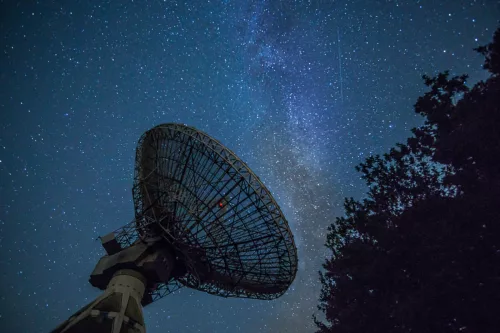
Exploring binary stars
Definition
Binary stars, as the name suggests, are star systems consisting of two stars that orbit around a common center of mass. These stars can be of varying sizes, distances, and types. Binary star systems are incredibly common in the universe and provide astronomers with valuable information about stellar evolution and dynamics.
Types of binary stars
There are three main types of binary star systems: close visual binaries, spectroscopic binaries, and eclipsing binaries. Close visual binaries are the ones where both stars are separately visible in a telescope. They can appear very close together or have a wider separation, but they are always physically associated and share a common space. Spectroscopic binaries, on the other hand, are binary systems where the presence of two stars is detected through the analysis of their spectra. These binaries may not necessarily appear as separate stars in a telescope but can be identified through their distinct spectral features. Eclipsing binaries are yet another type in which the two stars periodically eclipse, or pass in front of each other, as seen from Earth. These eclipses cause the overall brightness of the system to vary, providing astronomers with valuable data about the stars’ sizes, masses, and orbital properties.
Observing binary stars
Observing binary stars with a basic telescope can be an exciting experience. Close visual binaries are the easiest to observe, as they can be easily spotted as two distinct stars close together. Seeing the binary stars at different points in their orbit allows astronomers to measure the orbital period and calculate the masses of the stars. Spectroscopic binaries, although not visually separated, can be observed by analyzing the Doppler shifts in the stars’ spectral lines. By measuring the variations in these shifts, astronomers can determine the orbital characteristics of the system. Eclipsing binaries, with their characteristic light variations, can be observed through light curve measurements, which helps astronomers understand the stars’ sizes and masses.
Capabilities of a basic telescope
Aperture size
One of the most critical factors in a telescope’s capabilities is its aperture size. The aperture size refers to the diameter of the objective lens or primary mirror and determines the amount of light the telescope can gather. Generally, larger apertures allow for the collection of more light, resulting in brighter and clearer images. With a basic telescope, the aperture size is often limited, usually ranging from around 60mm to 90mm. While this may restrict the depth of objects that can be observed, star clusters and binary stars are still within the reach of these telescopes.
Magnification power
Magnification power is another important aspect of a basic telescope. It is determined by the combination of the objective and eyepiece lenses. Higher magnification allows for closer views of objects, but it is essential to find the right balance. With a basic telescope, the magnification power is typically limited, often ranging from around 50x to 200x. While this may not be sufficient for detailed observations of compact binary stars, it can still provide captivating views of star clusters and visually separated binary stars.
Tracking mechanisms
Basic telescopes often come equipped with tracking mechanisms to compensate for the Earth’s rotation. These mechanisms, such as manual or motor-driven equatorial mounts, allow the telescope to track the movement of objects in the night sky. This is particularly useful when observing star clusters or binary stars, as it helps to keep the objects in the field of view for extended periods. It ensures that you can fully enjoy and study these celestial wonders without the need for manual adjustments to keep them in sight.
Image quality
While basic telescopes may not offer the same level of image quality as professional-grade equipment, they can still provide satisfactory views. Image quality is influenced by various factors, including the telescope’s optics, build quality, and atmospheric conditions. Basic telescopes aim to provide sharp and focused images, allowing for the observation of star clusters and binary stars with decent clarity. However, it’s important to note that factors such as light pollution and atmospheric turbulence can affect the overall image quality, especially when observing faint objects.
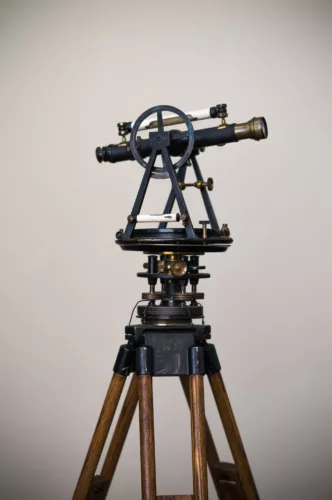
Visibility of star clusters
Open clusters
Open clusters are often more accessible and visible than globular clusters. These clusters are scattered throughout the Milky Way, and some of the most famous examples include the Pleiades and the Beehive Cluster. With a basic telescope, open clusters can be easily observed as a group of stars gathered together in the sky. The telescope’s aperture and magnification power enable you to explore the individual stars within the cluster and appreciate their unique characteristics. Open clusters often appear as a collection of stars in various shapes and arrangements, and their beauty is truly awe-inspiring.
Globular clusters
Globular clusters, with their densely packed stars, present a different observing experience. With a basic telescope, it is still possible to observe some of the brighter and larger globular clusters, such as Omega Centauri and M13 in Hercules. These clusters appear as tight spherical formations of thousands of stars. While the individual stars may not be distinguishable with a basic telescope, the overall cluster structure and the concentrated brightness can still be mesmerizing.
Finding star clusters with a basic telescope
To locate star clusters with a basic telescope, it is helpful to consult star maps or astronomy software that can provide guidance on their positions in the night sky. Many astronomy apps and websites offer features that allow you to input your location and desired observation time to generate a customized map. With these tools, you can easily identify the constellations that host star clusters and then point your telescope in the right direction. It’s important to note that some star clusters may require dark sky conditions or specific seasons to be visible, so it’s best to plan your observing sessions accordingly.
Visibility of binary stars
Close visual binaries
Close visual binaries are among the most accessible binary systems to observe with a basic telescope. These binaries are pairs of stars that appear separately visible in the telescope, often appearing very close together. With the appropriate magnification power, you can observe the individual stars and witness their orbital motion over time. Close visual binaries offer a unique opportunity to witness the dynamic nature of binary star systems and appreciate the beauty of celestial companionship.
Spectroscopic binaries
Spectroscopic binaries may not appear visually separated in a telescope, but they offer exciting observational challenges. These binaries are identified by observing the Doppler shifts in their spectral lines, which indicate their orbital motion. With a basic telescope, you may not be able to directly observe these shifts. However, understanding the concept and observing the changes in the spectrum’s shape and characteristics can still provide valuable insights into the binary system’s dynamics.
Eclipsing binaries
Eclipsing binaries provide a captivating spectacle for amateur astronomers. These binaries are characterized by their periodic eclipses, where one star passes in front of the other. These eclipses cause the overall brightness of the system to change. With a basic telescope, you can observe these variations in light intensity and record them over time. By analyzing the light curve, which shows the changes in brightness, astronomers can determine the sizes, masses, and orbital properties of the stars. Observing eclipsing binaries can be a rewarding experience and offers a unique opportunity to explore the secrets of these stellar dance partners.
Finding binary stars with a basic telescope
Similar to star clusters, finding binary stars with a basic telescope requires the use of star maps or astronomy software. These resources can help you identify the constellations that host binary stars and provide information on their positions. To observe close visual binaries, you can use the telescope’s magnification power to study the pairs of stars and trace their orbital motion. For spectroscopic binaries, you won’t be able to directly observe the stars’ separation, but by studying the spectral features, you can infer their binary nature. Observing eclipsing binaries involves documenting changes in brightness over time, capturing light curves, and analyzing the data to uncover the stars’ properties.
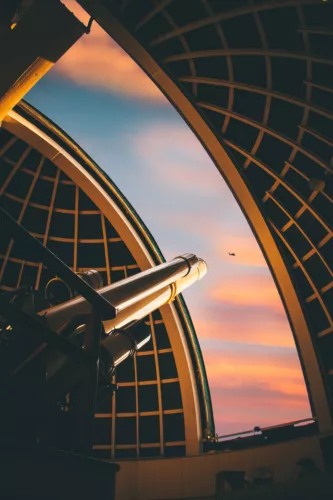
Challenges and considerations
Light pollution
Light pollution poses a significant challenge when observing star clusters and binary stars with a basic telescope. The artificial lights from cities and streetlights can dim the visibility of these celestial objects. To overcome this, it is recommended to find a dark sky location, away from urban areas, where the night sky remains relatively free from light pollution. Rural areas or designated dark-sky parks offer optimal conditions for observing star clusters and binary stars. Additionally, using light pollution filters can help mitigate some of the effects caused by nearby sources of light.
Amateur vs. professional equipment
While basic telescopes provide an excellent starting point for astronomy enthusiasts, it’s important to recognize the limitations of these instruments compared to professional-grade equipment. Professional telescopes typically have larger apertures, higher magnification capabilities, and advanced tracking mechanisms. These features allow for more detailed observations of star clusters and binary stars. However, basic telescopes still offer valuable insights and visual experiences, enabling beginners to explore the wonders of the night sky without breaking the bank.
Conditions for best viewing
The quality of the observing conditions can greatly impact the visibility of star clusters and binary stars. Clear, dark, and stable atmospheric conditions are ideal for optimal viewing. Moonless nights, away from sources of artificial light, provide the darkest skies, enhancing the visibility of faint objects. Stable atmospheric conditions reduce atmospheric turbulence, resulting in sharper and clearer images. Observing during periods of good weather and avoiding hazy or cloudy skies will provide the best opportunities for viewing star clusters and binary stars with a basic telescope.
Importance of star maps and software
Star maps and astronomy software play a crucial role in locating and identifying star clusters and binary stars. They provide a comprehensive overview of the night sky and help you navigate the celestial landscape. Star maps offer visual representations of constellations and identify the clusters and binaries within them. Astronomy software goes a step further by offering real-time sky maps, night vision mode, and detailed information about objects of interest. Embracing these tools will enhance your observing experience and allow you to make the most of your time with the telescope.
Recommended basic telescopes
Budget-friendly options
Celestron AstroMaster 70AZ – With a 70mm aperture and a lightweight design, this telescope offers a great balance between affordability and performance. It provides clear views of star clusters and binary stars, making it an excellent choice for beginners.
Meade Instruments Infinity 70mm – This refracting telescope comes with a stable tripod and two eyepieces, allowing for different magnification options. Its 70mm aperture provides enough light gathering capability to observe various celestial objects, including star clusters and binary stars.
Telescopes with good optical capabilities
Orion StarBlast 4.5 Astro Reflector – This tabletop telescope offers a 4.5-inch aperture, providing excellent light gathering capabilities. It comes with two eyepieces and a red dot finder, making it easy to locate and observe star clusters and binary stars.
Sky-Watcher Classic Dobsonian – Dobsonian telescopes are known for their simple yet effective designs. With various aperture options available, such as 6-inch and 8-inch, these telescopes offer great optical capabilities for observing star clusters and binary stars.
Popular basic telescopes among astronomers
Celestron NexStar 130SLT – This computerized telescope offers a 130mm aperture and motorized tracking, making it a popular choice among beginners and intermediate astronomers. Its sturdy construction and easy setup allow for convenient observation of star clusters and binary stars.
Meade LX70 Maksutov-Cassegrain – The compact design of this telescope, combined with its excellent image quality, makes it a favorite among amateur astronomers. With a variety of aperture options available, it offers versatility for observing star clusters and binary stars.
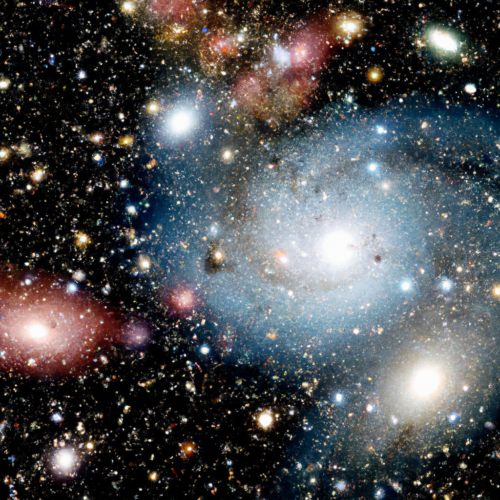
Tips for observing star clusters and binary stars
Choosing the right time
Observing star clusters and binary stars requires considering the right time and conditions. Optimal viewing times include moonless nights when the dark sky allows for better visibility. Checking weather forecasts and avoiding hazy or cloudy nights ensures clear views. In addition, some binary stars, like eclipsing binaries, have specific periods when their brightness variations are most pronounced. Consulting astronomical resources or apps can help determine the best times for observing specific star clusters and binary stars.
Using appropriate filters
Filters can enhance observations of star clusters and binary stars. Light pollution filters, such as the SkyGlow filter, help reduce the impact of artificial lights, enhancing the visibility of faint objects. Additionally, color filters can improve the contrast and visibility of certain star cluster features. Filters can be attached to the telescope’s eyepieces, allowing for easy customization depending on the observing targets and conditions.
Adjusting telescope settings
To optimize your viewing experience, adjusting telescope settings is crucial. Start by aligning your telescope using the appropriate alignment procedures, ensuring accurate tracking. Adjust the focus to achieve the sharpest image, especially when observing binary stars with close separations. Experimenting with different magnifications can reveal unique details or perspectives of the star clusters and binary stars.
Recording observations
Recording observations is a valuable practice that allows you to document your findings and revisit them later. Jot down important details such as the date, time, and location of your observations. Take note of the objects observed, their features, and any changes observed in binary systems. Additionally, sketching or capturing images through photography can provide a visual record and serve as a reminder of your observations.
Enhancing your experience
Binoculars as a supplement
Binoculars can be a great supplement to your basic telescope. They offer a wider field of view, allowing for the observation of larger areas of sky and capturing star clusters in their entirety. Binoculars are especially effective for seeing open clusters and can enhance the overall observing experience. Combined with a basic telescope, binoculars offer a versatile approach to exploring both star clusters and binary stars.
Joining astronomy clubs
Joining local astronomy clubs or societies is an excellent way to enhance your experience and connect with fellow stargazers. These clubs often organize observing sessions, star parties, and workshops where you can learn from experienced astronomers. They provide opportunities to share knowledge, ask questions, and collaborate on observations, enhancing your understanding and enjoyment of star clusters and binary stars.
Attending star parties or public observatories
Star parties and public observatories offer unique opportunities to observe celestial objects in a social and educational setting. Star parties are events organized by astronomy clubs or groups, where participants gather to observe the night sky together. They provide access to larger telescopes, expert guidance, and a chance to engage with other enthusiasts. Similarly, public observatories often organize regular viewing sessions and educational programs, allowing people to explore the wonders of the universe under the guidance of experienced astronomers.
By embracing these tips and recommendations, you can make the most out of your basic telescope and embark on a fulfilling journey to observe star clusters and binary stars. The magic of the night sky awaits, and with a bit of patience, curiosity, and the right equipment, you can explore these celestial marvels and deepen your understanding of the vast cosmos. Happy stargazing!
